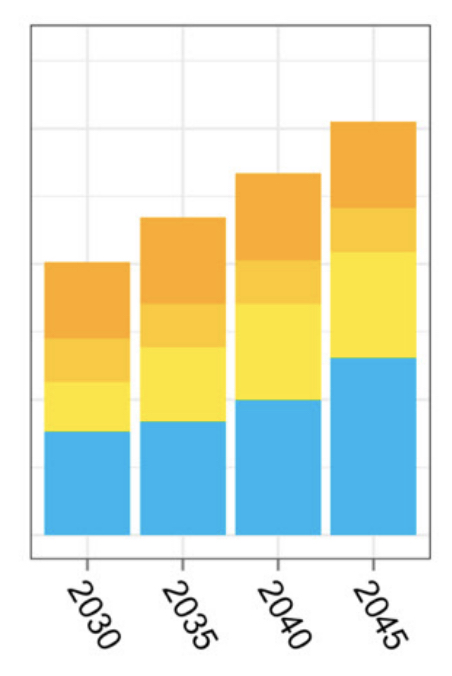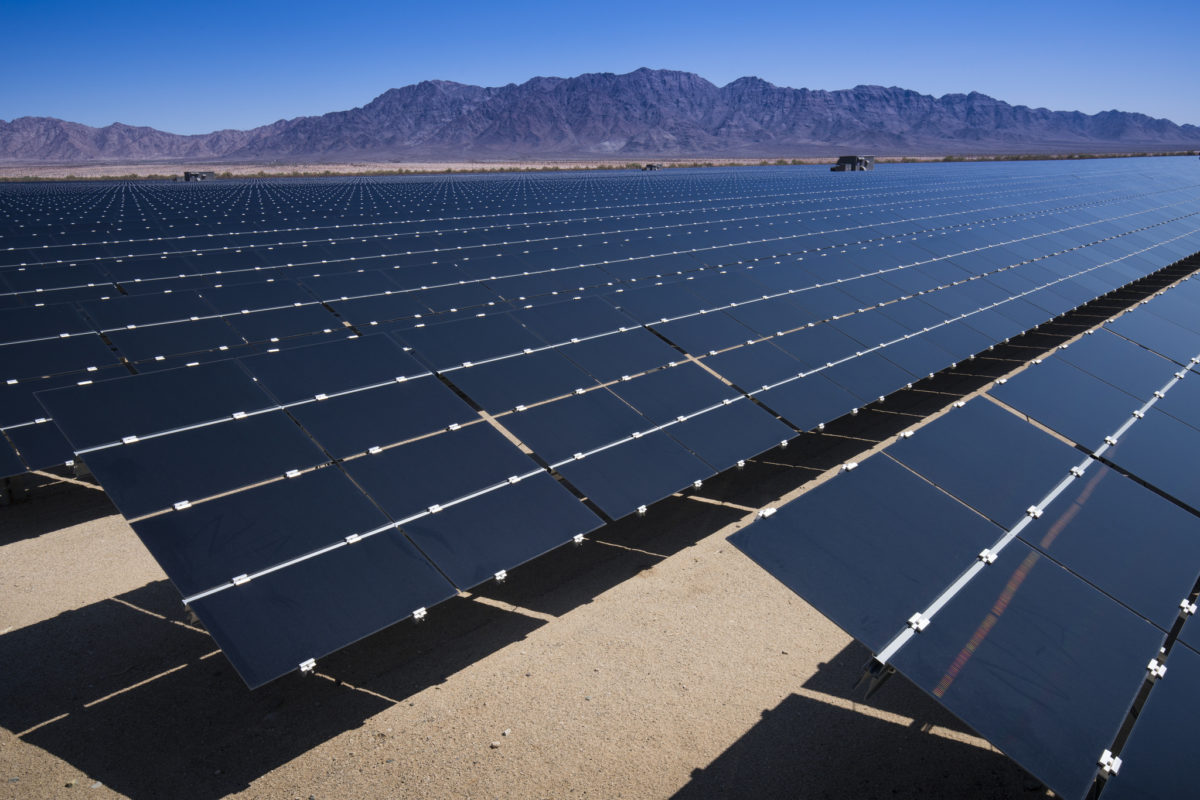Adding 10GW of solar and 5GW of battery storage each year would enable California to reach 100% renewables by 2035 with electrification of heating, transportation and industry, according to an analysis by consultancy Energy+Environmental Economics.
Adding an average of 10GW of solar per year would require doubling California’s highest level to date, which was 5GW in 2016 as reported by the trade group SEIA. Last year, the state’s grid operator CAISO processed 5GW of interconnection requests for utility-scale solar, while the state installed 1.7GW of small-scale solar. Adding an average of 5GW of battery storage per year would require a sharper ramp in installations. The CAISO grid region now has 2.6GW of battery capacity, while CAISO completed full interconnection studies for 7GW of battery storage last year.
The consultancy E3’s presentation did not mention wind power as a generation resource, while in a similar study for Los Angeles, NREL included wind power.

NREL’s analysis of how Los Angeles could achieve 100% renewables found that the city’s municipal utility could reach a high-electrification scenario by 2035 by installing about 5GW of utility-scale solar, 2.5GW of customer-sited solar and 4.5GW of wind power, as shown at right (from figure 24 in chapter 6).
Because Los Angeles has 1/10 the population of California, those capacity totals for Los Angeles by 2035 may be comparable, for a similar high-electrification scenario, to the required annual capacity additions statewide in each of the 10-plus years through 2035.
Invited to comment on the aggressive renewables scenario for California, Jin Noh with the California Energy Storage Alliance said achieving the higher level of solar and storage deployment would require streamlining interconnection and permitting, proactive planning where possible, and minimizing regulatory risk, “such as when tariffs or resource adequacy rules change, that make it difficult to finance and invest in the level of scale needed.”
NREL similarly advised the Los Angeles municipal utility that if it pursues a target of 100% renewables by 2035, “success would require an accelerated schedule for renewable energy procurement, permitting, siting, and workforce training.” NREL noted that its 2035 scenario would reach 98% carbon-free electricity by 2030, but would keep adding “significant” new capacity through 2035 to meet the final 2% of energy needs during extended periods of low wind and solar generation, as gas units are retired.
E3’s results showed the need for 47GW of solar associated with electrolysis demand to produce hydrogen for seasonal storage, in the scenario with 100% renewables with electrification. E3 did not specify whether that amount of solar was included in its projected need for annual solar additions. If not, E3’s projected need for annual solar additions through 2035 would be greater than 10GW.
E3’s analysis used the PATHWAYS model, which is designed for studies of economy-wide decarbonization, and which models the electric sector with hourly treatment.
E3 also modeled three other scenarios for the California Air Resources Board, as the board updates a scoping plan that will include cost-effective policies to meet the state’s goal of carbon neutrality by 2045. The scoping plan will address all sources of greenhouse gases, not just the electricity sector.
This content is protected by copyright and may not be reused. If you want to cooperate with us and would like to reuse some of our content, please contact: editors@pv-magazine.com.








Will we find enough copper and aluminium supplies to meet this lofty goal of doubling ? We are not opening new copper mines at all. China has levelled off its growth in aluminium smelting.. The only other potential source is recycling more of those metals.. if we can locate them in the backyards and garages .. where there are old junk lying around .. PV needs to investigate more on future copper and aluminium supplies or prices will go up as demand goes up from inadequate chain supply .. This is one reason we are not going as fast enough with clean energy.. We stopped and went as if based on the supply chain so to avoid any price surges .. Aluminium prices had surged already.. so this put a big dent on our clean energy future gong forward.. Copper prices is close and this is probably the biggest reason we are still so slow with clean energy.